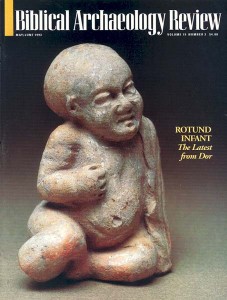It is one of the most enigmatic images in the New Testament: “I saw a beast rising out of the sea, with ten horns and a blasphemous name upon its heads … Then I saw another beast which rose out of the earth; it had two horns like a lamb and it spoke like a dragon … it causes all … to be marked on the right hand or the forehead … Let him who has understanding reckon the number of the beast … its number is 666.” Can archaeology possibly shed light on this passage from Revelation 13? The answer, surprisingly, is yes, and the place to look is a city in western Asia Minor. In “Ephesus—Key to a Vision in Revelation,” Steven Friesen describes the city’s ancient remains—including a magnificent library and the theater where locals rioted to protest Paul’s preaching—and concentrates on an impressive temple and a bath/gymnasium complex built to honor the imperial Roman family. As Friesen explains, it is this emperor worship that is crucial to understanding Revelation 13.
Already a library member? Log in here.
Institution user? Log in with your IP address.

